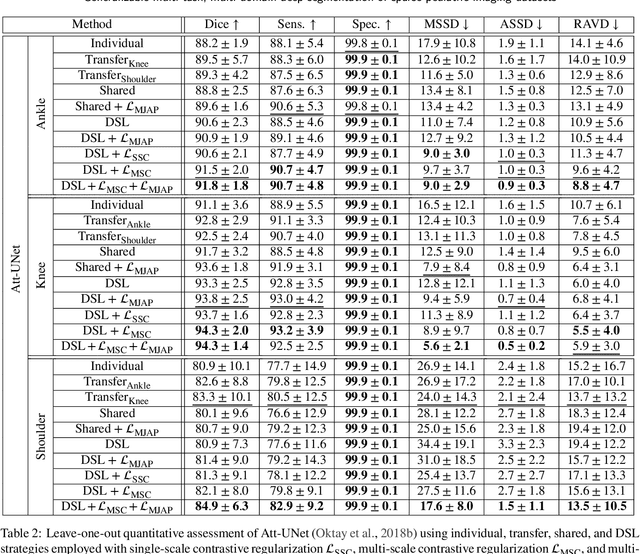Generalizable multi-task, multi-domain deep segmentation of sparse pediatric imaging datasets via multi-scale contrastive regularization and multi-joint anatomical priors
Paper and Code
Jul 27, 2022



Clinical diagnosis of the pediatric musculoskeletal system relies on the analysis of medical imaging examinations. In the medical image processing pipeline, semantic segmentation using deep learning algorithms enables an automatic generation of patient-specific three-dimensional anatomical models which are crucial for morphological evaluation. However, the scarcity of pediatric imaging resources may result in reduced accuracy and generalization performance of individual deep segmentation models. In this study, we propose to design a novel multi-task, multi-domain learning framework in which a single segmentation network is optimized over the union of multiple datasets arising from distinct parts of the anatomy. Unlike previous approaches, we simultaneously consider multiple intensity domains and segmentation tasks to overcome the inherent scarcity of pediatric data while leveraging shared features between imaging datasets. To further improve generalization capabilities, we employ a transfer learning scheme from natural image classification, along with a multi-scale contrastive regularization aimed at promoting domain-specific clusters in the shared representations, and multi-joint anatomical priors to enforce anatomically consistent predictions. We evaluate our contributions for performing bone segmentation using three scarce and pediatric imaging datasets of the ankle, knee, and shoulder joints. Our results demonstrate that the proposed approach outperforms individual, transfer, and shared segmentation schemes in Dice metric with statistically sufficient margins. The proposed model brings new perspectives towards intelligent use of imaging resources and better management of pediatric musculoskeletal disorders.
 Add to Chrome
Add to Chrome Add to Firefox
Add to Firefox Add to Edge
Add to Edge